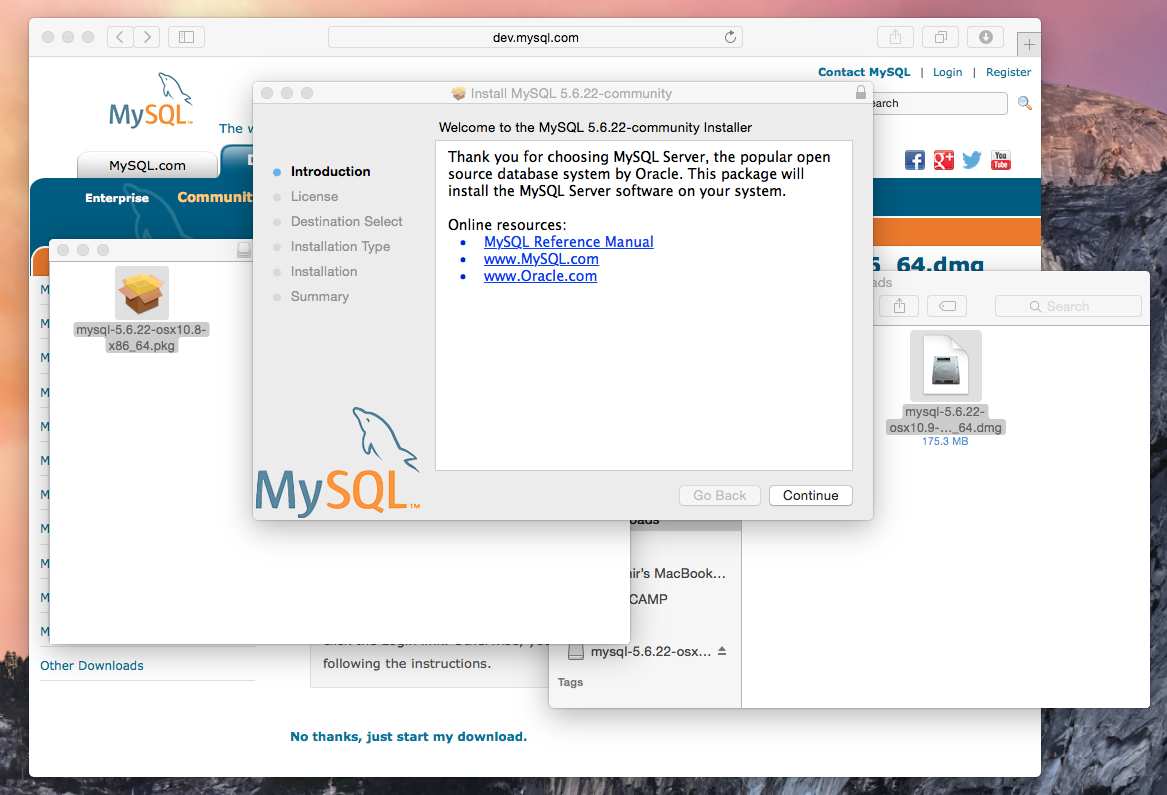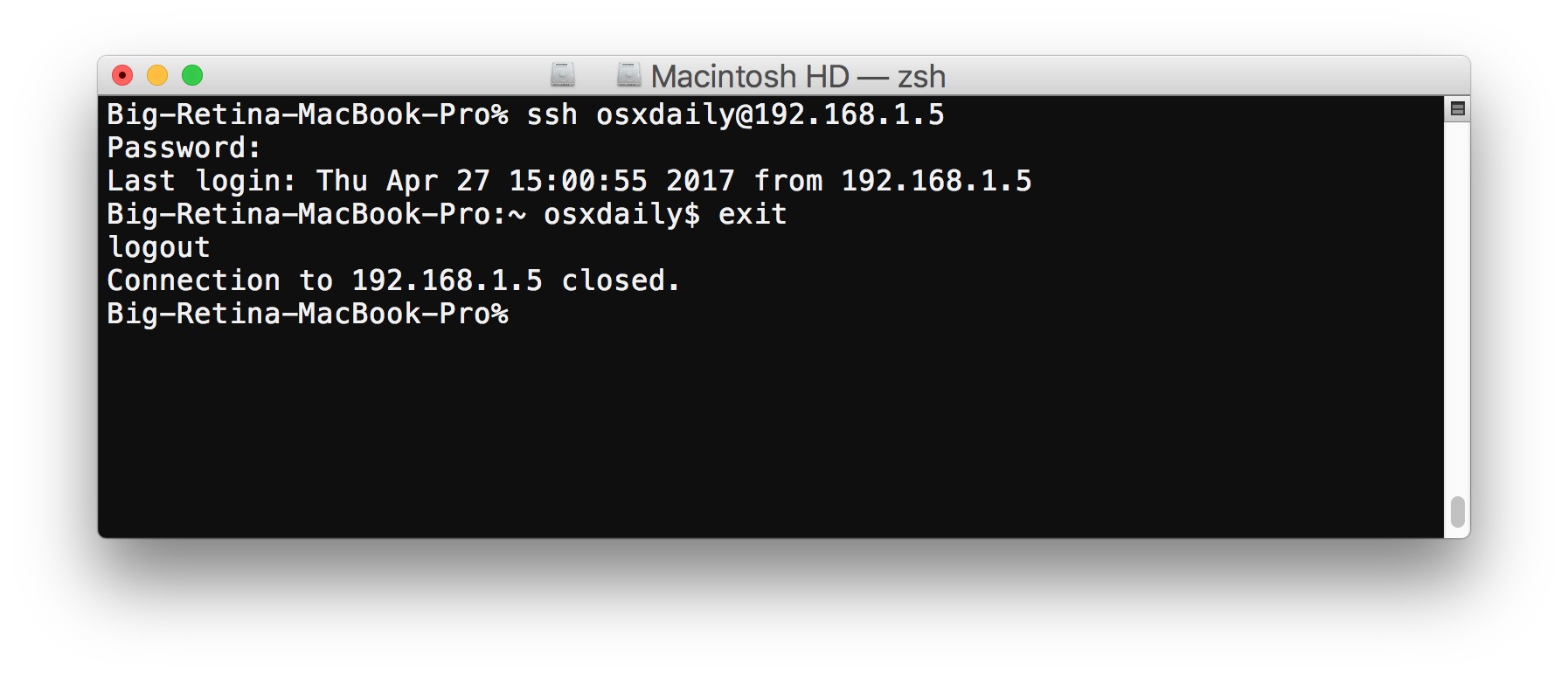Transferring files to and from a UNIX server (terminal) You may copy files to and from a UNIX/Linux server in the Terminal window as well, using the 'scp' command. The syntax is either. Scp filetocopyfrom username@hostname:filetocopyto. Scp username@hostname:filetocopyfrom filetocopyto. Depending on whether you want to copy the. Uploading and Downloading Files. One of the basic functions of an FTP/SFTP client is the ability to.
You may not realize it, but your Mac already runs a variant of UNIX. You can easily access a terminal window to use your computer's built-in UNIX functionality with the 'Terminal' program (Applications/Utilities/Terminal.app). You may want to make a shortcut to this program in your Dock, since you'll be using it a lot from now on. Similarly, you can use your Mac directly to log into a UNIX server, and even to transfer files to/from a UNIX server.
Enabling X11-Forwarding (Popping up windows from the UNIX server)
Your Mac comes with another program that enables you to display graphics from programs running on a remote UNIX/Linux server, called 'XQuartz' (Applications/Utilities/XQuartz.app). On older OS X systems this program was called 'X11' and was located in essentially the same location. If neither of these programs are currently installed on your Mac, you can download XQuartz from the Mac App Store (free).
To enable forwarding, just run XQuartz/X11 before starting Terminal. If a xterm window pops up from XQuartz/X11, you may close that window before starting Terminal, since Terminal is more feature-rich than XTerm (my opinion). Once XQuartz/X11 is running, when you log into remote UNIX servers (as shown in the next section) you should be able to display remote graphics.
Logging into an UNIX server
The standard protocol for logging into a modern UNIX server is through using a Secure SHell (SSH) client. OS X has built-in SSH functionality, through the 'ssh' command in the Terminal.
To use ssh from the Terminal:
- Open Terminal.
- At the command line, type
ssh username@hostname -CY
orssh username@hostname -CX
(the Y vs X difference is minimal, and will not affect your user experience, just remember to use one of them). Here, username is your user name on the UNIX server, and hostname is the name of the UNIX server. For example, I could log into the UNIX server titan.smu.edu with the commandssh reynolds@titan.smu.edu -CY

For additional information on using ssh, type
man ssh
(short for manual) in the Terminal window.
Transferring files to and from a UNIX server (terminal)
You may copy files to and from a UNIX/Linux server in the Terminal window as well, using the 'scp' command. The syntax is either
scp file_to_copy_from username@hostname:file_to_copy_to
or
scp username@hostname:file_to_copy_from file_to_copy_to
depending on whether you want to copy the file to or from the UNIX server. For example, suppose I have a file named 'file1' in my home directory on titan, and I want to copy it to the current directory on my Mac (the one the terminal is in, type 'pwd' to see which directory you are in if unsure):
scp reynolds@titan.smu.edu:file1 .
or

Download File From Remote Server
scp reynolds@titan.smu.edu:file1 file1
would give the desired result. Suppose now that I have the file 'file2' in the current directory on my Mac that I want to copy to my home directory on titan:
scp file2 reynolds@titan.smu.edu:
or
scp file2 reynolds@titan.smu.edu:file2
would do the trick. For more information on the 'scp' command, type man scp in the terminal.
Linux Server Download Free
Transferring files to and from a UNIX server (graphical)
Fetch
One of the most popular graphical file transfer options in OS X is the program Fetch. This is not a free program.
To use Fetch, fill in the UNIX hostname (e.g. titan.smu.edu), your username on that host (e.g. reynolds), and your password on that host, then click 'Connect'. You will then see a display of your remote directory on the UNIX server. Transfer files by dragging them to and from the Finder.
FileZilla
Linux Server Download Iso

A free alternative to Fetch that may be used from OS X, Windows and Linux is is FileZilla. To install FileZilla in OS X:
- Download the FileZilla client for Mac OS X from here.
- Open the FileZilla installation file to unpack the application.
- You may run Filezilla.app from the Desktop, or you can instead move it to your Applications folder.
To use FileZilla, fill in the fields for the host (e.g. titan.smu.edu), your username on that host (e.g. reynolds), your password, and the port (use 22 for SFTP), and hit [return]. You should notice two file browser windows open up, the browser on the left is on your computer, the browser on the right is from the UNIX host (e.g. titan). Transfer files by dragging them from one computer to the other with your mouse.
D.R. Reynolds, 28 August 2014
Ssh Get File From Server
Terminal User Guide
In Terminal, you can move and copy files locally or remotely using the mv, cp, and scp command-line tools.
Tip: It’s easier to move and copy files using the Finder. See Organize files in folders.
Move a file or folder locally
In the Terminal app on your Mac, use the
mvcommand to move files or folders from one location to another on the same computer. Themvcommand moves the file or folder from its old location and puts it in the new location.For example, to move a file from your Downloads folder to a Work folder in your Documents folder:
% mv ~/Downloads/MyFile.txt ~/Documents/Work/MyFile.txtYou can also change the name of the file as it’s moved:
% mv ~/Downloads/MyFile.txt ~/Documents/Work/NewFileName.txt
See the mv command man page.
Copy a file or folder locally
Linux Command To Download File
In the Terminal app on your Mac, use the
cpcommand to make a copy of a file.For example, to copy a folder named Expenses in your Documents folder to another volume named Data:
% cp -R ~/Documents/Expenses /Volumes/Data/ExpensesThe
-Rflag causescpto copy the folder and its contents. Note that the folder name does not end with a slash, which would change howcpcopies the folder.
See the cp command man page.
Copy a file or folder remotely
In the Terminal app on your Mac, use the
scpcommand to copy a file or folder to or from a remote computer.scpuses the same underlying protocols asssh.For example, to copy a compressed file from your home folder to another user’s home folder on a remote server:
% scp -E ~/ImportantPapers.tgz username@remoteserver.com:/Users/username/Desktop/ImportantPapers.tgzYou’re prompted for the user’s password.
The
-Eflag preserves extended attributes, resource forks, and ACL information.The
-rflag, which isn’t used in this example, causesscpto copy a folder and its contents.
Linux Download File To Local
See the scp command man page.